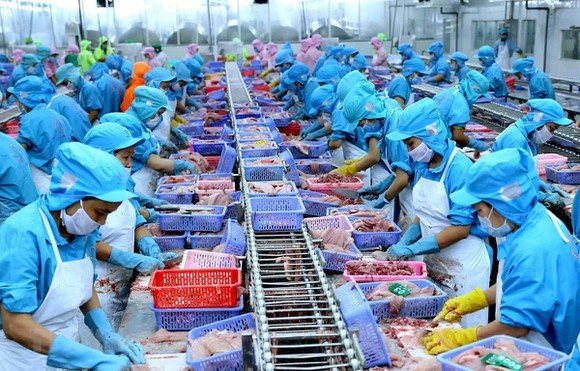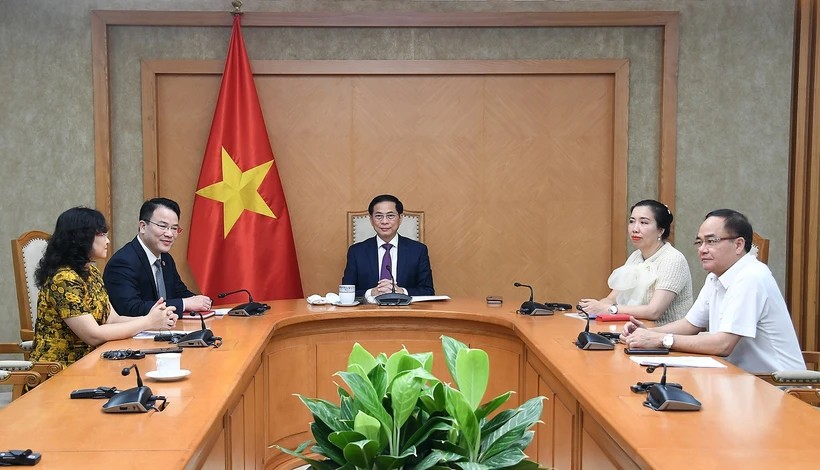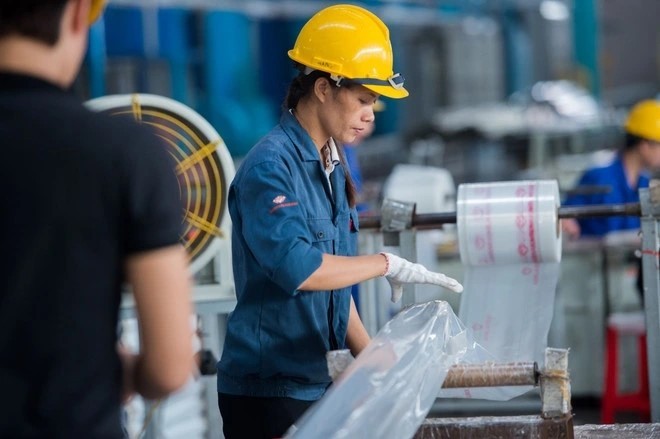Vietnam economic growth: History, today and future vision
| Pork price was asked to be reduced by Vietnamese Ministry | |
| Vietnam economy in 2020, keeping taking off incredibly or not ? | |
| Vietnam’s e-commerce market to surpass US$17bn in 2023: GlobalData |
 |
Vietnam's economy in the 30-year wars (1945-1975)
The wartime economy (1945-1954)
Just one day after the declaration of independence on September 2, 1945, the Provisional Revolutionary Government had its first session. The tasks for the State of the Democratic Republic of Vietnam was to eradicate starvation and illiteracy.
The resistance-war economy had been developed since 1951, the Vietnam State Bank was set up and the Vietnamese bank note introduced from June 10th, 1951, making an important point in the distribution of goods, trade and commercial activities started to develop.
The 1954-1975 economy - Both at war and in peace
From 1954 to 1964, the overall task was to complete the remaining duties of the national and democratic revolution, and to begin socialist construction.
From 1954 to 1957, a land reform was launched following the slogan "rice fields for tillers" and economic restoration after the war completed.
From 1958 to 1960, the task of socialist transformation and economic development was focused.
From 1961 to 1965: Implementation of the first five-year plan on socio-economic development was carried out.
From 1965 to 1975, the war spread nationwide.
The centrally planned subsidized economy (1975-1986)
At that time, Vietnam was still a poor agricultural country, with 80% of the population and 70% of the labor force living in rural areas and subsiding on agriculture.
The economy's production was not enough to meet the demand for food, thus no accumulation could be made for expansive reproduction.
By 1974 state-owned industry accounted for 72.2%, private and individual enterprises possessed 2.3%; 25.5% belonged to the collective sector.
By 1984 socialist economic sectors and state-owned business accounted for an absolute percentage in the total social production. The mechanism based on public property dominated the whole production of society.
The beginning period of renovation cause (1986-1991):
The meetings of the Politburo and of the 5th Party Central Committee from July to December 1986 all concentrated on compiling and approving the Political Report to submit to the 6th National Congress.
The Congress pointed out the mistakes and shortcomings in the socio-economic guidelines. These included subjectivism in approaches, voluntarism, simple and mean actions.
The Congress put a special emphasis on improving and enhancing the effectiveness of external economics.
In building a new management system, a big reform in the State apparatus was carried out.
The period of industrialization and modernization
In the 1996-2000 period, GDP increased by an average of 6.94%, agriculture saw an annual increase of 1 million tons, industry rose by an average of 13.5%, gross domestic product increased two times in comparison with 1990.
In addition, despite the devastating natural disasters in the years 2000 and 2001, the socio-economic development tempo still increased by 7% and 6.8% respectively. Vietnam economic growth rate constantly increases by years.
The guideline to develop a multi-sector economy has been carried out effectively. Socialist-oriented market economy has been formed and macro economy stabilized: Soundly developing economy and dealing with social issues, so the life of the majority of people has been improved.
Economic structure and growth after 20 years of renovation (1986-2006)
To revitalize state-owned enterprises and enhance their effectiveness of production and business, thus promoting their competitiveness and the regional and international integration, maintaining the key role of state-owned enterprises in the national economy, the Government has launched a three-year program of State-run enterprise rearrangement (2002-2005).
| After three years of implementation of this program, the number of 100%-state funded enterprises is now 2,980 and there are 670 joint-stock companies where the State holds over 51% of the charter capital. From the corporations 91, in the fourth quarter of 2005 and the first quarter of 2006, four state-owned economic groups were founded: Post and Telecommunication, Vinashin, Garments, and Coal and Minerals. |
The 2010 aims and 2020 vision
On August 13, 2004, the Prime Minister launched three Decisions 145, 146 and 148/2004/QD-TTg on development in Vietnam's three main economic zones:
- Orientations for socio-economic development in the Northern Economic Zone by 2010 and the 2020 Vision implemented in eight centrally-administered cities/provinces (Hanoi, Hai Phong, Quang Ninh, Hai Duong, Hung Yen, Ha Tay, Vinh Phuc, and Bac Ninh) in order to make full use of the potential and advantages brought about by their geological conditions and infrastructures.
- Orientations for socio-economic development in the Central Economic Zone consisting of five provinces and cities (Da Nang, Thua Thien-Hue, Quang Nam, Quang Ngai, and Binh Dinh) to make full use of the potential, geological location, thus ensuring the motivation role and promoting the development of Central Vietnam and Central Highlands.
- The Southern Economic Zone (Ho Chi Minh City, Binh Duong, Ba Ria- Vung Tau, Dong Nai, Tay Ninh, Binh Phuoc, Long An, and Tien Giang) is oriented to becoming a dynamic economic zone with a high and sustainable growth rate, heading the national industrialization and modernization, creating a momentum for the development of the eastern part of South Vietnam.
| Vietnam is set to lose billions of dollars due to coronavirus The coronavirus could cause Vietnam's GDP growth rate to drop by around 1% for the year, former Vietnamese government adviser Le Dang Doanh told Business Insider (BI). "The government still keeps the growth target unchanged," Doanh, who served as a member of the UN Committee for Development Policy from 2016 to 2018, said in an email to BI. "But I think the GDP growth rate of Vietnam's economy in 2020 should be reduced by ca. 1 [percentage point] from the 6.9% target, maybe to around 6.0-5.9%." However, Stephen Wyatt, the country head of Jones Lang LaSalle Vietnam, believes that coronavirus has the potential to create some economic opportunities in Vietnam. Supply-chain issues in China might help manufacturers decide to move more production into Vietnam, continuing a trend sparked in part by Vietnam's cheaper labor market and the US-China trade war, BI reports. |
 | Vietnam’s digital economy comes up first in the APAC region Vietnam is believed to be the fastest-growing digital economy in the Asia Pacific (APAC). |
 | Vietnam has a robust economy with an attractive business environment: Diplomat In an interview with Diplomatisches Magazin, Vietnamese Ambassador in Germany Nguyen Minh Vu talks about the "Strategic Partnership" between Vietnam and Germany, the rapid economic ... |
 | Vietnam’s economy to overtake Singapore’s in 10 years: DBS report Vietnam’s economy will be bigger than Singapore's in a decade if current growth conditions continue, a DBS report said. |










